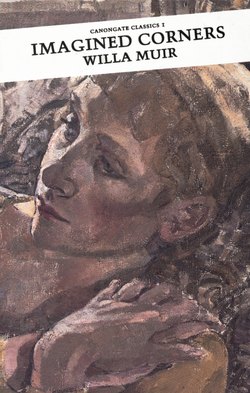Читать книгу Imagined Corners - Willa Muir - Страница 7
На сайте Литреса книга снята с продажи.
I
ОглавлениеThat obliquity of the earth with reference to the sun which makes twilight linger both at dawn and dusk in northern latitudes prolongs summer and winter with the same uncertainty in a dawdling autumn and a tardy spring. Indeed, the arguable uncertainty of the sun’s gradual approach and withdrawal in these regions may have first sharpened the discrimination of the natives to that acuteness for which they are renowned, so that it would be a keen-minded Scot who could, without fear of contradiction, say to his fellows: ‘the day has now fully dawned,’ or ‘the summer has now definitely departed.’ Early one September there was a day in Calderwick on which the hardiest Scot would not have ventured so positive a statement, for it could still have passed for what the inhabitants of Calderwick take to be summer. Over the links and sandy dunes stretching between the town and the sea larks were rising from every tussock of grass, twitching up into the air as if depending from invisible strings, followed more slowly by the heavy, oily fragrance of gorse blossom and the occasional sharpness of thyme bruised by a golfer’s heel. The warmth of the sea-water was well over sixty degrees and the half-dozen bathing coaches had not yet been drawn creaking into retirement by a municipal carthorse.
All this late summer peace and fragrance belonged to the municipality. The burgh of Calderwick owned its golf and its bathing, its sand and its gorse. The larks nested in municipal grass, the crows waddled on municipal turf. But few of the citizens of Calderwick followed their example. The season for summer visitors was over, although summer still lingered, and the burgh of Calderwick was busy about its jute mills, its grain mills, its shipping, schools, shops, offices and dwelling-houses. The larks, the crows and the gulls, after all, were not ratepayers. It is doubtful whether they even knew that they were domiciled in Scotland.
The town of Calderwick turned its back on the sea and the links, clinging, with that instinct for the highest which distinguishes so many ancient burghs, to a ridge well above sea-level along the back of which the High Street lay like a spine, with ribs running down on either side. It was not a large enough town to have trams, and at this time, the Motor Age being comparatively infantile, there was not even a bus connecting it with outlying villages: but the main railway line from Edinburgh to Aberdeen ran through it, and it had an extra branch line of its own. In short, Calderwick was an important, self-respecting trading community, with a fair harbour and fertile agricultural land behind it.
On this clear, sunny day in early September – a good day on which to become acquainted with Calderwick – a bride and a bridegroom were due to arrive in the town, the bridgroom a native, born and brought up in Calderwick, the bride a stranger. Human life is so intricate in its relationships that newcomers, whether native or not, cannot be dropped into a town like glass balls into plain water; there are too many elements already suspended in the liquid, and newcomers are at least partly soluble. What they may precipitate remains to be seen.
